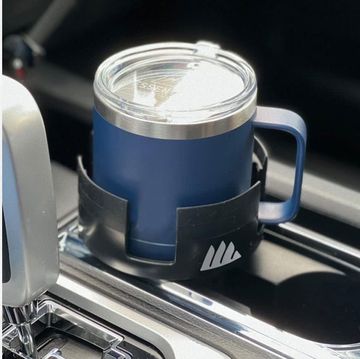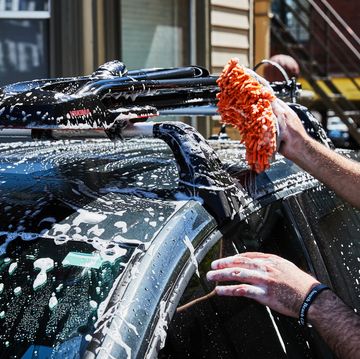It's a dusty, windy, hot day. You, however, are secure, cool and comfortable inside the passenger confines of your car as you pull into the gas station. It's so evil outside, you actually pay extra for Full Serve gasoline--but the attendant neglects to clean your windscreen before scurrying off to the next car. And you don't really notice until you head back into the sun, at which point every particle of dust and smeared bug carcass seems calculated to scatter sunlight. The road disappears, and you frantically hit the washer stalk and wiper switch to improve your vision.
Mistake. A few drops of water dribble onto the windscreen, and the wipers smear it into a paste, chattering back and forth across the screen in perfect little corduroy waves--through which you can see even less than before.
Time to tune up the washers and wipers. Here are a batch of things to try, depending on what part of the system isn't doing its job.
NOTHING LASTS FOREVER
Rubber windshield wiper blades sit on a hot surface in UV-rich sunlight for most of their lives, and that's tough on the rubber. The useful life span of a wiper blade is only two or three years. Minor streaking can sometimes be reduced by wiping the edge of the blade with rubbing alcohol or mineral spirits (use a clean rag for this). But every other year or so you'll need to replace the blade itself. If you hunt, you can still find inexpensive replacement rubber inserts, you cheapskate. If you can find inserts, be prepared for several minutes of fiddling to install them on your existing arms.
But by the time you need them, the articulated arm itself is probably in bad shape, too. If it's sticking, the blade won't conform to the shape of the glass, leaving you with streaks or unwiped areas. Spring for a complete wiper blade. Most are replaced with no more trouble than depressing a catch--or perhaps removing a pin--and pulling them off the wiper arm. There will be instructions in the package with the wiper blade.
Chatterbox
Does one of your wipers chatter like an agitated monkey as the blade traverses your windshield in one direction or the other? If the wiper-motor arm is twisted so the blade doesn't sit perpendicular to the glass, the blade is far more likely to chatter. Look along the length of the blade to check. If the motor arm has been twisted, possibly after being savaged by a carwash brush or a gas jockey who's had too much Mountain Dew, just twist it back with a pair of adjustable wrenches tightened on the arm. Remove the wiper blade to make room for the wrenches, and use a rag to keep from scratching the windshield. Some tape on the arm will protect the paint.
Glug, Glug
So much for the wipers. The parts unseen--the washer components-- can cause just as much mischief.
Does your washer go through a whole gallon of blue fluid in only a few minutes of drizzly day running? The real kicker: Is there blue stuff on the driveway nowhere near the windshield?You've got a leak, caused by a hose that's been pinched or perhaps is just disintegrating after a long and arduous life in the furnace of a car's underhood environment. Get a helper to toggle the pump while you trace the hoses from the nozzle to the tank. You might use tap water instead of washer fluid for this test: It's cheaper and it doesn't burn when you accidentally squirt it in your eye. Don't ask.
Just run your fingers along the line, looking for the leak. Replace the damaged hose (it's probably time to replace it all if it's deteriorated enough to leak). Also check for cracked plastic fittings, which befall a similar fate underhood, getting brittle and prone to splitting.If the flow is poor and there's no leak, you may have a clogged pump--which can happen if something other than water or washer fluid is added to the reservoir. That "something" is usually leaves or dirt from a bucket that wasn't cleaned or junk that sneaks in because a reservoir top is missing. Check by pulling the hose off right at the pump output. Toggle the washer, and look for healthy flow. If it's good, the pump is fine and the hose may simply be pinched. You may need to reroute the hose.
To change this kind of blade arm, depress the tab and unhook the arm. Other types of attachments are just as simple.
It may be necessary to remove the hood blanket to access the hoses and the back of the washer nozzles. The washer reservoir may not be as accessible as this one when you try to reach the pumps and their wiring.
Got low flow right from the pump's output spud? Unbolt the reservoir, disconnect the electrical wires and hoses, and flush it out with water to remove any debris or sludge. Remove the pump from the reservoir and clear it out as well. Flush the pump with water, and then reinstall it.
If your vehicle has a rear-window washer, it probably has two identical pumps mounted on the reservoir. One good thing about this setup: If visibility gets dangerously impaired, you can swap the pumps and get the front one working to make it home without having to hunt for a dealer on Thanksgiving weekend or some other inconvenient time. One bad thing about swapping pumps: If you get the hoses or wires crossed, you'll be washing the wrong end of the car.
Electrical
When you pull on the wand to spray the windshield, do you get a lot of nothing? You might have electrical issues. Start by checking the fuse. The owner's manual will tell you where the fuse box is and which fuse controls the washers. Fuse good? Get a voltmeter or a 12-volt test light and back-probe the connector that carries current to the pump. If there's voltage at the connector, there might be a poor connection to the pump's side of the connector. And considering the high-humidity environment, it's no wonder that a common cause of problems is a rich coating of green fur on the connector. Clean things up with hot water, and reassemble with a coating of dielectric grease to prevent any invasion of moisture. If there's good voltage at the connector, and a good connection, then the pump should run. If not, the pump motor is bad, and will need to be replaced.
Running Dry?
Does one of your washer jets not work, or just pizzle onto the hood while the others send out a strong, fine stream? It might be clogged. Try sticking a dressmaker's pin or a toothpick into the nozzle to dislodge the foreign object. If you don't get it out, the obstruction may well lodge into the nozzle again in a short time. Remove the hose from the back of the nozzle, and flush backward with a garden hose or, better yet, a compressed-air line to blow it back, out of the fitting. I recommend peering into the reservoir to see if the offending piece of debris has any friends. They'll need to be flushed from the reservoir to prevent a recurrence.
One-Way
Many washer systems use a check valve to prevent fluid from draining back into the reservoir. If the check valve is clogged, you may or may not be able to clean it--because you can't backflush it. By design, there's no flow backward. Fortunately, replacement valves are cheap.
There's an even more important reason for the check valve. In cold weather, fluid draining back into the reservoir might allow a few drops of rain or melted snow to wick up into the washer nozzle. That water isn't alcohol-laced washer fluid with a freezing point well below zero--it's plain old water that will freeze at normal temperatures and plug the nozzle until there's a thaw outside or you park your car inside a heated garage long enough to thaw it. If your washers are inoperative only at low temps, check these valves. In extremely low temperatures, however, even regular washer fluid will freeze.
Use compressed air or running water to backflush debris from the nozzle. Remove the hose from the back of the nozzle to let the debris blow clear. Check the reservoir for junk if this is a frequent problem.
Dielectric grease will keep electrical connections free of corrosion, which thrives on the dampness near the pump.
Junk--in this case, leaves let in by a misplaced cap-- can plug the pump. Flush the reservoir; clean or replace the pump.














